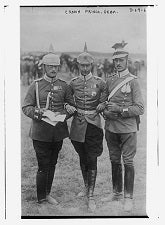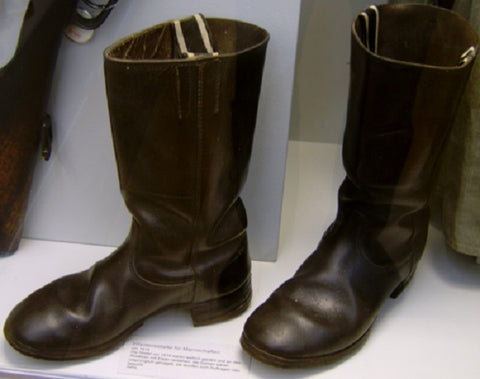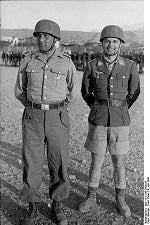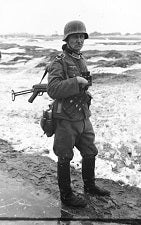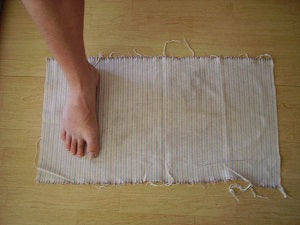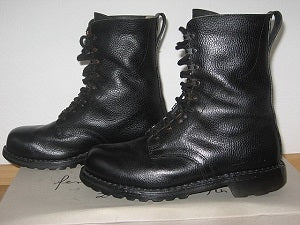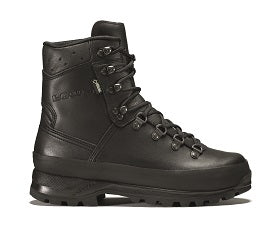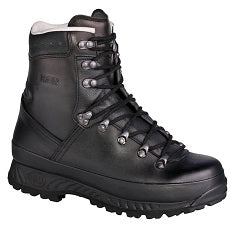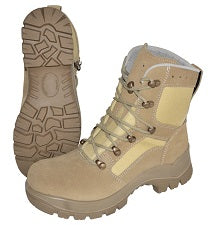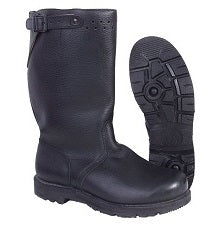
The German BW Army Boot
The German BW Army Boot
The army boots of the Federal Armed Forces are officially called combat shoes or combat boots. The army boots are specially made boots for soldiers. Combat shoes are worn during exercises, maneuvers, and combat. Also, the combat shoe is also worn in military parades. The special designation in Germany was formerly also “Kommissstiefel.” Already in the First World War German soldiers wore laced shoes. Therefore, the term “Kamerad Schnürschuh.” Combat shoes are worn mainly in the army; these are mostly waterproof and robust and have a non-slip rubber sole and a deep profile structure.
History and Development
The combat boot was already used in the imperial army of the operating infantry as military boots. Already around 1900 there were various providers of military boots who steadily improved their models. The history of the combat boot goes back to the year 1866 by the first primary standardized army boot the “Marschstiefel.”
Already at this time, the boots were worn by the Prussian army. The “Marschstiefel” was also worn at this time in civilian life before he finally found his application in the military. Besides, the “Marschstiefel” belonged to the Prussian army and the infantry battalions as basic equipment. Over time, the boot also became a prestigious trademark for officers and NCOs of the Prussian army. After the founding of the German Reich in 1871, the Prussian “Marschstiefel” was also introduced to the infantry in other German states. Special attention to these boots was the protection of the lower leg on mechanical impacts, the prevention of the ingress of dust and stones, and easy putting on the boots in the dark. To the disadvantage proved in the models of this time still a possible get stuck in tough mud and the disadvantages of wet boots by itself. At the time of the 19th century, the “Marschstiefel” was also an issue for many doctors. To ensure a better fit, the German army in 1909 held over 130 different foot-strips ready, which was used for accurate measurement of the foot of the recruits. In times of war as new troops had to be available quickly, it was not possible to guarantee a precise adaptation of the shoes. Many soldiers, therefore, had to wear inadequate or poorly fitting footwear and march with it.
Changes with the outbreak of the Second World War
In 1939, with the outbreak of the Second World War, probably the most significant optimization of the army boots came into the armed forces. An abbreviated version of the boots was introduced. The shaft height was cut from 32-41 cm to 29-35 cm to save the raw material leather. However, above all because of the tremendous increase in the number of German soldiers. The Wehrmacht ordered the footwear, like the imperial troops in the First World War, non-blacked. The later wearers were instructed to blacken their footwear before the first combat mission. The army boots were made of cowhide that was known for its sturdiness. As a result, the base price increased by 42% in the cavalry. The army boots of the infantry, however, were made of leather cases and the increase was 38%.
The army boots were also available in different models for paratroopers and navy. Stockings, socks, and flaps belonged to the equipment of each army boot. Due to the strained leather supply situation, the production texture changed in the years 1942-1944, and the army boots changed from leather to a rubber sole. Much of the army boots were produced in concentration camps by concentration camp prisoners under inhuman working conditions as the war progressed.
The Combat Boot in its present form in the Federal Republic of Germany
The shoes are today developed and produced by various manufacturers according to standardized specifications. That is because there never was a central manufactory for military combat boots in Germany. Therefore, despite uniform specifications often results in slight differences in production. The Bundeswehr traditionally awards the orders to German manufacturers. Of course, equipment may also be used to procure requests for foreign production facilities from non-NATO partners under the procurement law. Since the founding of the Federal Republic, the new armed forces should work in a market-oriented manner. At first, there were considerations that the soldier or the conscripts should cover their own needs by buying the clothing by itself (subsidized). It was agreed not to build up a so-called Intendantur, as in the German Empire or the Wehrmacht. Every armament contract should be awarded to the public and handled on the same market conditions. The tenders were very control-intensive and time-consuming. Since the founding of the Federal Armed Forces, it was in the interest of the decision-makers to bring about the privatization of the army.
A strong Development
A milestone in the development of the Federal Armed Forces combat boots was the 1971 model. At the behest of the then German Defense Minister Helmut Schmidt was in 1971 already at field-trials tested boots with extended shaft are introduced, which had the same thin profile rubber sole as its predecessor. Here one took an example of other shoe models, which were already used by NATO partners. That made the most decisive step in the change from the so-called army boot to the “BW-Kampfstiefel” as we know it today. The 1971 model was distinguished above all by its dimensional stability and more than a good fit, tear strength, abrasion resistance, and suppleness even with prolonged wearing time, noiselessness during movements as well as its and sensitivity to aggressive substances. The “Kampfstiefel 1971” also offered a secure grip on wet, stony, damp, metallic, and even frozen and grown soil. He was sufficiently protected against the cold and mostly waterproof, water vapor permeable and breathable enough in use.
Visually protected also in the infrared range. The combat boots offered the wearer a pleasant sense of touch to be able to operate pedals and levers in machines and vehicles and devices with his feet. He was sufficiently shock and impact protected.
In 2002, under the Schröder administration, the founding of the Federal Armed Forces Apparel Society took place. Its shareholder shares today are mainly held by Lion Apparel Deutschland GmbH and Hellmann Worldwide Logistik. The clothing company was initially able to sell uniforms and equipment and thus earn a lot of money. However, tender could still not be awarded on their own. The reason was the judgment from the year 2003 before the Higher State Court Duesseldorf, which forbade this. The distribution and dressing are done today by the Federal Armed Forces Apparel Management GmbH via so-called service stations and mobile service points.
Various Variations according to Troop Specification
The combat boot is available in many variations today, specially adapted and modified to the own troops and special forces. Some so-called special models are worn by mountain infantry and paratroopers as well as some of the flying personnel. Tropical boots especially worn by the fast response forces in the tropical climate. Special desert boots that are worn in the deserts like Mali and Afghanistan. The most common models are manufactured here by the company Haix, Lowa, and the company Meindl. The German Navy also has its specially tailored shoe, the model 2000 sea boot, as well as its 2013 upgrade model.
The Combat Boots in today's Civilian Life
Also, outside the army and military units, the so-called combat boots are enormous popularity. For example, they are often worn in the security and bouncer industry. Subcultures also wear combat boots for fashion identification. From the punk, rock to the alternative scene. The combat boots became popular again in the past decades in civilian life and today has a permanent place in the everyday clothing culture.
The shoes can be purchased by civilians today in so-called Army-Surplus-Shops (BW-shops) both locally and online.
